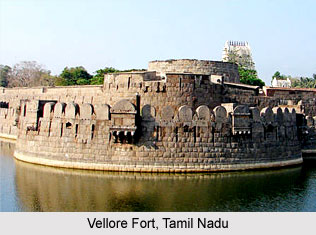 Venkatapati Deva Raya, also referred to as Venkata II reigned over Vijayanagar Empire from 1585 to 1646 CE. Sriranga II was his elder brother, while his father was Tirumala Deva Raya. Venkatapati Raya was the youngest son of Tirumala. This king was known for his capability to restore strength and peace in his kingdom by solving the internal conflicts of his empire, motivating the internal economy of Vijayanagara and maintaining diplomatic relationships with the Deccan Sultans of Bijapur.
Venkatapati Deva Raya, also referred to as Venkata II reigned over Vijayanagar Empire from 1585 to 1646 CE. Sriranga II was his elder brother, while his father was Tirumala Deva Raya. Venkatapati Raya was the youngest son of Tirumala. This king was known for his capability to restore strength and peace in his kingdom by solving the internal conflicts of his empire, motivating the internal economy of Vijayanagara and maintaining diplomatic relationships with the Deccan Sultans of Bijapur.
Battles Fought by Venkatapati Deva Raya
In the year 1588, Venkatapati Deva Raya entered into warfare with the Bijapur Sultanates and Golconda Sultans and managed to recapture a few territories which were previously lost by the past rulers of his dynasty. Kasturiranga led a Hindu army who were engaged in fighting numerous wars against the Sultanates. As per historical evidences, the strength of the Muslim armies exceeded 1, 20000 and were also equipped with Turko-Afghan gunners. Kasturiranga faced the Muslim troops on the banks of Pennar River. The battle was fierce and continued for 8 hours, wherein the Muslim armies clashed violently with the Hindu armies which led to much bloodshed. Finally, the battle of Pennar was won by the army of Vijayanagar and over 50, 000 soldiers belonging to Bijapur and Golconda were annihilated. Innumerable chieftains of the kingdoms in the northern part of the nation rebelled against Venkatapati Deva Raya, including a few descendants of Aliya Rama Raya, but they were all defeated by Venkatapati Raya.
During 1586, the Nayak of the region of Ginjee revolted against Venkata II. However, he was attacked by Venkata II and imprisoned till Raghunatha Nayak of Tanjore arranged for his release by cooperating with Venkata II in his campaign of Penukonda. Venkatapati Deva Raya had sent Venkata to rule Ginjee. Later, Venkata II gained control of the Vellore Fort and defeated Lingama Nayak of the region of Vellore. Venkata II moved his capital to Chandragiri from Penukonda around 1592. Again in the year 1604, Venkata II shifted his own capital to Vellore Fort, from Chandragiri.
The judicial system under the rule of Venkatapati Deva Raya was quite strong and just. The northern parts of his territories were administered by introducing some agricultural reforms in his kingdom.
Arrival of Dutch
The Dutch established a factory in Pulicat in the year 1608, who were already carrying out trade activities in Ginjee and Golconda. From 1586 onwards, Obayama, who was the favourite queen of the king Venkatapati Deva Raya was sent to Pulicat to rule the region. It is said that Obayama had assisted the Portuguese Jesuits for creating a residence at Pulicat.
Venkata II did not possess a son and therefore made Sriranga II, who was the son of Rama Raya, his elder brother, as the new king of Vijayanagar. Historical records claim that this step was taken by the king to prevent Obayama from conspiring against the king by adopting a baby from a Brahmin maid servant and calling it her own child. Venkatapati II died in October 1614 and Sriranga II then ascended the throne.



















